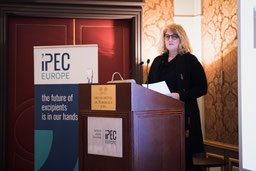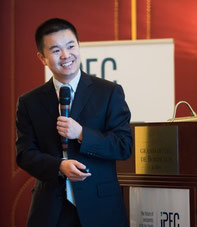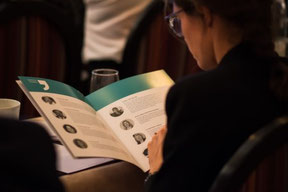Highlights of IPEC Europe Excipient Forum – Bordeaux 2018


IPEC Europe’s annual Excipient Forum took place on 1 February in Bordeaux, providing the usual high-quality insights into the
commercial, regulatory and scientific issues affecting both suppliers and users of pharmaceutical excipients.

Kicking off proceedings, Dr Susanne Keitel, director of the European Directorate for the Quality of Medicines and Healthcare (EDQM), updated delegates on the draft general monograph on co-processed excipients as well as other European Pharmacopoeia (Ph. Eur.) developments. These included the modernisation programme for general methods in
the compendium and the implementation of ICH Q3D on elemental impurities. Co-processed excipients or CPEs – which have improved functionalities compared to ‘simple’ blends – have been used in marketed products for a number of years but the term has not been clearly defined in the EU. The decision was taken at EDQM to develop a general monograph as CPEs may require different quality controls to excipient mixtures, and a first draft was prepared in 2015 with a second revision published last year. EDQM’s Excipients Working Party will review feedback on the latest draft at a meeting in March, after which it will be either sent to the Ph. Eur. Commission for adoption or put through another round of discussions. Keitel also reviewed the progress with revisions to the general chapters, texts and monographs which need updating as there are inconsistencies between them in some cases. Also, new technologies and regulatory developments – such as the REACH toxicity legislation – have to be accommodated. So far eleven General Methods have been revised. visible (2.2.25), amongst others.

Prof Brian Carlin, immediate past chair of IPEC-Americas QbD Committee, picked up the baton on co-processed excipients and discussed how these can be used to overcome the lack of new chemical entity (NCE) excipients being introduced onto the market, with only three novel excipients launched in the last 20 years. CPEs can provide improved functional characteristics and enhanced properties that are simply not achievable through simple blending, but minimise the safety data burden as they are typically composed of substances already evaluated for safety.
From a regulatory perspective, they should be assessed on the CPE as a whole and not as a simple blend, and risk assessment should be scientifically based and evaluated on a case-by-case basis. He told the Meeting that IPEC-Americas new Excipient Safety Evaluation Procedure could be used to reduce CPE regulatory uncertainty, while the recently-published IPEC CPE for pharmaceutical excipients guide (2017) provides an invaluable framework for the manufacturers and users of these excipients.

Covering the topic of monographs from a US perspective, Catherine Sheehan of the US Pharmacopeia Convention (USP) noted that excipients are a hot topic at the moment for a number of reasons. These include the emergence of CPEs and dual active/atypical active excipients, and a recognition that there is a lack of new excipients being developed. USP’s excipients Expert Committee is continually working to revise excipient monographs to take into account changes in industry practice. At current estimates, 172 National Formulary (NF) monographs need to be updated because changes need to be made to identification, assay, impurity and specific test sections.
Sheehan also covered CPEs, noting that USP has a Guideline in place for introducing these excipients into the NF but is up for Revision and is in the fiscal year 2019 work plan, as well as novel excipients. As new excipients are only evaluated as part of the New Drug Application (NDA)
procedure there is an immediate disincentive to using them, and USP has agreed with FDA to carry out a quantitative survey to examine how it may be possible to develop ways to encourage their development and use.

Staying on a pharmacopoeial topic, Dr Sabine Kopp
– group lead, medicines quality assurance at the World Health Organization (WHO) – updated delegates on the agency’s work in developing a Good Pharmacopoeial Practices guide (GPhP), and discussed the role it can play in encouraging convergence among international compendia and supporting regulatory authorities in overseeing the quality of pharmaceutical ingredients and their finished products.
The main GPhP text on pharmaceutical substances and finished pharmaceutical products was adopted in 2016. Two additional chapters in the GPhP covering compounding and herbal medicines are still subject to a final round of consultation by participating world pharmacopoeias but look like they will be included in the next report.

Tackling the continually evolving regulatory requirements
for excipients in China, IPEC China chair Colin Li introduced
the changes towards the end of last year (CFDA No. 146) and explained that while the new regulation is a clear improvement over the earlier ‘bundling’ approach to excipients, there are still some important differences with the EU and US regulatory systems. As of 30 November 2017, China has effectively introduced a drug master file (DMF) system for excipients, including a registration scheme and excipients database. This means that excipient companies can submit dossiers for excipients themselves, although they will be reviewed alongside a drug product application in common with active ingredients and packaging. Excipients used in imported finished drugs are also covered by the new regulation, and a letter of authorization (LOA) between the drug manufacturer and excipient supplier must be included in the application.
There are also revised procedures for change notifications and annual reporting currently out for public comment, and some of the Feedback received focuses on a proposed transition period for registration of excipients used in imports and classification of the dossier requirements for different types of excipients. Li said that the introduction of a DMF system is the culmination of eight years of effort by IPEC China and other stakeholders.

With formalised risk-assessment for assessing the
appropriate GMP for excipients now an EU requirement, Kate Coleman of consultancy PharmaLex described a new tool the company has developed that can be used to standardise and simplify how an excipient risk assessment is
conducted and incorporated into a quality management system.
Prof Carlin returned to the podium later in the day alongside Dr Yvonne Rosiaux of Gattefosse to tackle the topic of quality by design (QbD), and specifically a case study that reveals the
benefits of excipient suppliers and users working together in applying the concept. Suppliers can support QbD projects by generating knowledge for the user on excipient variability, process capabilities such as predicting out-of-specification risk and using case studies to identify potential critical material attributes that could affect the drug product, said Rosiaux.
From the perspective of excipient users, Carlin noted that QbD requires that the impact of excipient variability on finished product quality is understood and controlled, particularly as excipients are not uncommonly the reason for special cause variation (SCV) – new unanticipated
emergent behaviours in the manufacturing system. There is no such thing as a non-critical excipient, he remarked, and explained how Kano analyses can be applied to provide a more structured approach to excipient incorporation in formulation design.
Don’t just rely on compliance testing, he advised, adding that keeping communication channels open with suppliers can help remove uncertainty and improve understanding of complexities and criticalities to hopefully avoid SCV.
Rounding off the day’s programme, Elham Blouet, global market manager at Roquette, discussed the excipient attributes required for parenteral preparations, providing a comprehensive rundown of the different types used in injectables and their functional properties.
The attributes of excipients – i.e. their physical or chemical or biological properties – should be evaluated in the context of the specific formulation to determine the critical material attributes (CMAs) and to ensure the critical quality attributes (CQAs) of the final parenteral
preparation, she concluded.
Please contact the IPEC Europe Secretariat for any questions related to the IPEC Europe Forum 2018.
About IPEC Europe
IPEC Europe, the International Pharmaceutical Excipients Council Europe, is a non-profit association that represents producers, distributors and users of pharmaceutical excipients. Together with its sister associations, IPEC Americas, IPEC Japan, IPEC China and IPEC India, the Council is a member of IPEC Federation whose global membership extends to more than 200 companies. In 2008, IPEC Europe initiated with other industry experts the development of a certification scheme for excipients suppliers that has become the free-standing association EXCiPACT in January 2014. IPEC Europe offers a unique forum for members to exchange good
practices and to develop harmonised standards for pharmaceutical excipients. It strives to continuously promote and achieve worldwide acceptance and use of the IPEC developed guidelines as a means of improving and ensuring quality, safety, and functionality of pharmaceutical excipients. In 2018, IPEC Europe asbl Counts 69 full members, plus four associate and three co-opted members. Activities are organised through Committees or Task Forces, the activities of which are communicated during the Annual General Meeting and in IPEC Europe newsletters, which are regularly posted on the news section of IPEC Europe’s Website.


